- I have three widgets (shown below) - a label, an entry, and a button.
- I'm hoping to accept user input of an integer when the button is clicked.
- I get the following error: ERROR RESOLVED! I was making this too complicated. Success is Mine!!!
- I believe that my problem is related to this:
- I chopped it down to the minimum amount of code possible to achieve this before posting.
Any Ideas or obvious failures you see would be greatly appreciated.
Screenshot of screen #1 (should eventually progress to screen #2 after all the players are entered. Screen #2 is where the game will begin.):
Working Code:
from tkinter import *
import tkinter
from PIL import Image, ImageTk
# The next 2 imports override the basic Tk widgets
# widget options that use fg and bg will no longer work.
# Must use, instead, ttk.Style class
from tkinter import ttk
from tkinter.ttk import *
# See docs.python.org/8/library/tkinter.ttk.html
# Class Based Windows
# youtube.com/watch?v=RkaekNkIKNY
# Tkinter - GUI Eaxample Multiple Display Frames
# youtube.com/watch?v=KdoOm3xo8X0
def main():
root = tkinter.Tk()
window1 = Window(root, "Play_a_game_of_Pig", "969x690", "someMessage",
"pig.ico", 0)
return None
class Window:
number_of_players = 0
# int player_names[] = new player_names[number_of_players]
def __init__(self, root, title, geometry, message, iconbitmap,
playerNumber):
self.root = root # this is the instance variable for the entire window
self.root.title(title)
self.root.geometry(geometry)
self.root.iconbitmap(iconbitmap)
self.number_of_players = playerNumber
# Make the window show up in center of screen and not be ccovered up by anything else.
# self.root.eval('tk::PlaceWindow %s center' % self.root.wininfo_toplevel())
# this is an important line.
# self.root.mainloop()
def addPlayers():
"""Allows user to input the number of and names of all game players"""
# stackoverflow.com/questions/12169258/should-i-use-entrys-get-or-its-textvariables-for-tkinter-in-python
print("\n initial # of players = " + str(self.number_of_players))
# Collects user input from the entry and turns it into an int
# user_input_number_of_players.set(int(str(entry_player_number.get("1.0", 'end-1c'))))
try:
user_input_number_of_players = int(entry_player_number.get())
print("Inside try block, user_input = ")
print(user_input_number_of_players)
self.number_of_players = user_input_number_of_players
except ValueError:
tkinter.messagebox.showerror('Non-Integer Input', 'User MUST enter a player # greater than 1.', icon = 'error')
# tkinter.messagebox.deiconify()
# tkinter.messagebox.quit()
# tkinter.messagebox.destroy()
#user_input_number_of_players.set(int(str(entry_player_number.get("1.0", 'end-1c'))))
# Set class instance value to this input from the user
# self.number_of_players = user_input_number_of_players
print("# of players after click = " + str(self.number_of_players))
return self.number_of_players
print("# of players after click = " + str(self.number_of_players))
# Add a label
myLabel1 = tkinter.Label(self.root, text="Please Enter # of Players",
width=25)
myLabel1.config(font="Courier 14 bold")
myLabel1.grid(row=2, column=1)
# bind user input to a variable from the entry box.
# Specifies a name whose value is linked to the widget value.
user_input_number_of_players = tkinter.StringVar()
# add an entry box
entry_player_number = tkinter.Entry(self.root, width=5, borderwidth=5,
textvariable=user_input_number_of_players)
# number.set(int("0"))
entry_player_number.grid(row=2, column=3, rowspan=2)
# specify a default value inside the entry box
# entry_player_number.insert(0,int("2"))
# Add a button for adding players to the game
addPlayerButton = tkinter.ttk.Button(self.root,
text="Enter",
command=addPlayers)
addPlayerButton.grid(row=2, column=4)
self.root.mainloop()
pass
pass
main()
In Summary, I first made two screens. I'm hoping to make these into classes. The first screen (pictured) should get input from the user. Then, the first screen should progress to the second screen.
To do this, I have used the following resources:


